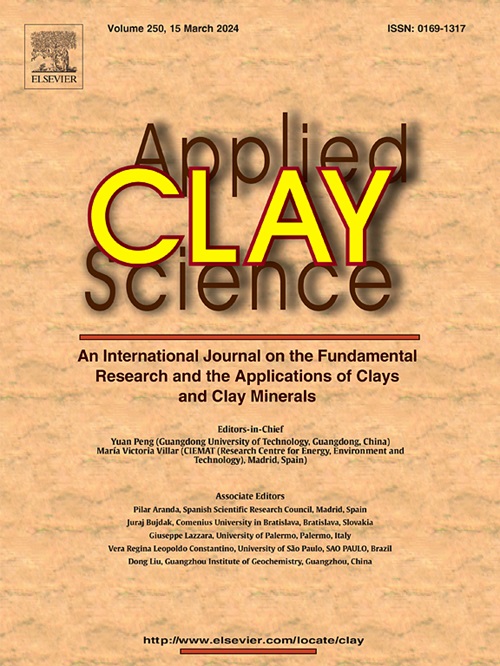Physical and mechanical properties of ceramics: insights into raw material selection in prehistoric pottery production in Croatia
IF 5.3
2区 地球科学
Q2 CHEMISTRY, PHYSICAL
引用次数: 0
Abstract
This study investigates the physical and mechanical properties of ceramics, with a particular emphasis on the influence of clay composition and tempering materials on ceramic point load strength and the technological process involved in ancient ceramic production. A combination of analytical methods was employed, including X-ray diffraction (XRD), optical microscopy, laser granulometry, Atterberg limits, shrinkage evaluation, and the point load index test. Two clay types; sandy clay and inclusion-poor clay, alongside four tempering materials; calcite, sand, grog, and vegetal material, all commonly used during prehistory in Croatia, were analysed. The results show that the inclusion-poor clay requires more complex preparation and firing but results in stronger ceramics. In contrast, sandy clay, which is easier to process and fire, produces ceramics with lower strength. The effect of tempering materials is clay-dependent, with a more significant impact observed in inclusion-poor clay. These results emphasize the critical role of clay in shaping the production process and ceramic properties, highlighting the need to adapt technological process to clay characteristics. Communities selecting sandy clay prioritized ease of preparation, while those using inclusion-poor clay valued its superior functionality despite greater technological demands.
陶瓷的物理和机械性能:对克罗地亚史前陶器生产中原材料选择的见解
本研究考察了陶瓷的物理力学性能,特别强调了粘土成分和回火材料对陶瓷点载荷强度的影响以及古代陶瓷生产的工艺过程。采用x射线衍射(XRD)、光学显微镜、激光粒度法、阿特伯格极限(Atterberg limits)、收缩率评价和点载荷指数试验等综合分析方法。两种粘土类型;砂质粘土和包裹性差的粘土,以及四种回火材料;方解石、沙子、烈酒和植物材料,这些都是克罗地亚史前时期常用的材料。结果表明,含包体较差的粘土制备和烧制过程较为复杂,但陶瓷强度较高。相比之下,砂质粘土更容易加工和烧制,产生的陶瓷强度较低。回火材料的影响与粘土有关,在包裹体差的粘土中观察到更显著的影响。这些结果强调了粘土在塑造生产过程和陶瓷性能中的关键作用,强调了适应粘土特性的技术过程的必要性。选择砂质粘土的社区优先考虑制备的便捷性,而使用包容性差的粘土的社区则重视其优越的功能,尽管技术要求更高。
本文章由计算机程序翻译,如有差异,请以英文原文为准。
求助全文
约1分钟内获得全文
求助全文
来源期刊

Applied Clay Science
地学-矿物学
CiteScore
10.30
自引率
10.70%
发文量
289
审稿时长
39 days
期刊介绍:
Applied Clay Science aims to be an international journal attracting high quality scientific papers on clays and clay minerals, including research papers, reviews, and technical notes. The journal covers typical subjects of Fundamental and Applied Clay Science such as:
• Synthesis and purification
• Structural, crystallographic and mineralogical properties of clays and clay minerals
• Thermal properties of clays and clay minerals
• Physico-chemical properties including i) surface and interface properties; ii) thermodynamic properties; iii) mechanical properties
• Interaction with water, with polar and apolar molecules
• Colloidal properties and rheology
• Adsorption, Intercalation, Ionic exchange
• Genesis and deposits of clay minerals
• Geology and geochemistry of clays
• Modification of clays and clay minerals properties by thermal and physical treatments
• Modification by chemical treatments with organic and inorganic molecules(organoclays, pillared clays)
• Modification by biological microorganisms. etc...
 求助内容:
求助内容: 应助结果提醒方式:
应助结果提醒方式:


